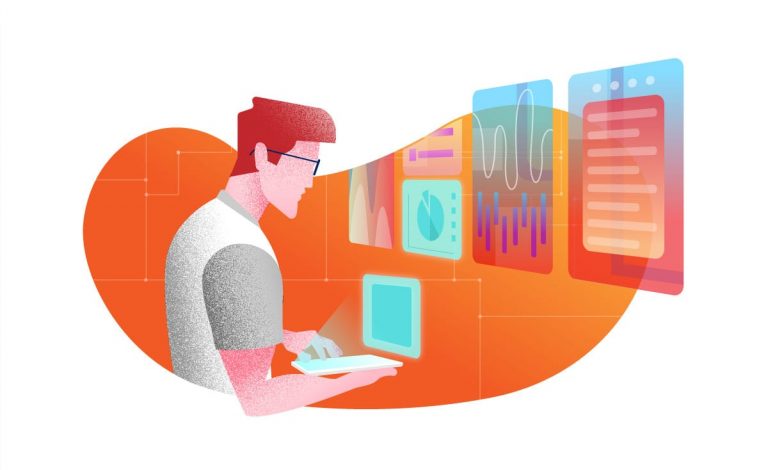Co-Foundry Tech – Next Generation Software Development Now
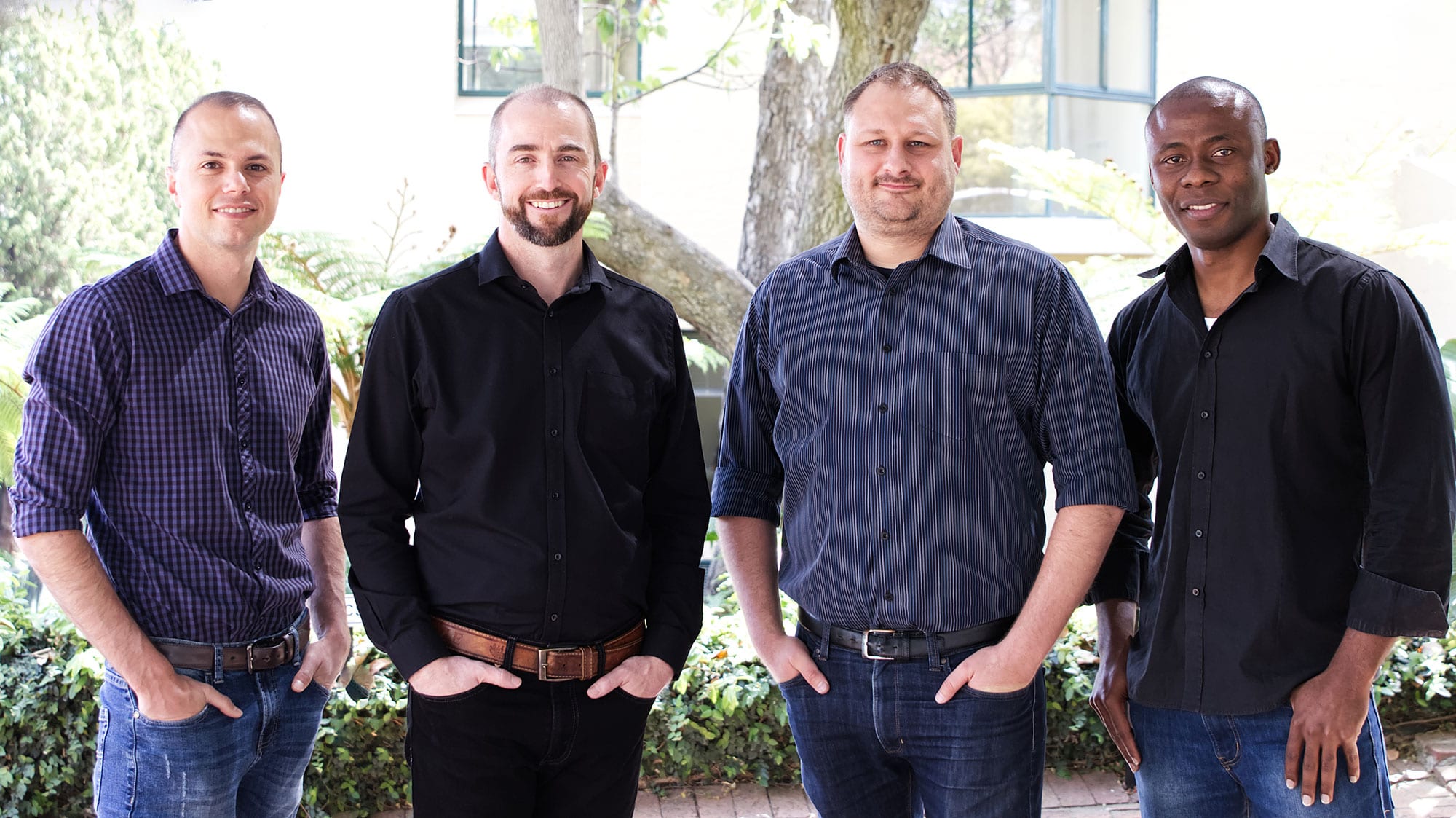
The Secret Sauce Behind The Co-foundry Development Team
Yes, today we’re going to take you behind the scenes, revealing a secret recipe and maybe even give you a sample taster of what’s rocking the software development world right now.
You’re going to want to read right till the end. We’re going to give you a look into an amazing new future. A future in which even small businesses will cheaply and in virtually no time at all be able to produce fully functional, customized software products, with little to no developer intervention.
Not everyone can easily relate to software, but food is another story…
So to make it a little more palatable I’m calling it the secret sauce behind Co-Foundry development house’s success.
It’s already allowed Co-Foundry to:
- Successfully service over 100 partner businesses
- Service over 300K monthly visitors across partner platforms
- Build 27 enterprise-level software applications and counting
- Accumulate over 45 years of experience within their growing team
So what is this masterpiece of organizational and technological advancement? To find out we got in touch with the master of operations to see what’s cooking…
Interview With The Head Chef

Greg Gunner heads the development team at Co-Foundry software development house. He’s worked for years with his team to create their own special sauce.
He calls it: Co-Foundry Tech
What Is Co-Foundry Tech?
“At the end of the day, there is a lot of technology out there that makes jobs and tasks easier. But, there’s a big gap that still needs to be filled between what is out there and what actually needs to get done to deliver a final product to a client.
One of the biggest obstacles developers encounter is best described like this:
Think of an engineer that is tasked to design a car. He could go and invent and discover every aspect of the car from the ground up.
- Source the rubber for the tires
- Have the glass for the windows custom made using his own process
- Cast the steel to make the framework
- Etc. etc.
But that doesn’t happen. Most cars have a huge amount of common parts that get used interchangeably at least within the same brand, and even between completely different brands of cars.
It would be ridiculous to think of a car manufacturer worrying about designing a new type of screw to fit the pieces of the car together right? The work has already been done well enough by others. It would make no sense for them to try and make their own tires as well, when there is a perfectly developed tire market already functioning.
It’s exactly the same with software.
The reality is that there are common components between pretty much every piece of software. What is different between one piece of software and another is usually the experience that the user experiences. It’s not what’s happening in the background with bits of code flying around across the internet in various machines across the world.
Things like:
- How data is stored
- How it’s moved around to and from different machines in different locations
All that stuff is very, very common and there is a very basic way of handling that.
The problem comes in that most systems don’t truly address these common elements and provide a universal framework on which anything can be built.
So you end up with a bit of software here that kind of does what you want, talking to another bit of software here that also does most of what you want. Far from ideal. (I’ll go into an example of this shortly.)
And in the end, there’s a huge amount of energy used in trying to get the code right and not enough energy used in making the perfect experience for the user that’s going to use the software in the first place!
So Co-Foundry Tech is all about having basic software modules (think of them just like the individual car parts we mentioned earlier) that can then be used in many different applications.
This means we can concentrate the lion’s share of attention on what really matters:
user experience, workability and less time to produce.
We can then make that experience highly customized to that particular business’s requirements and that particular workflow.”
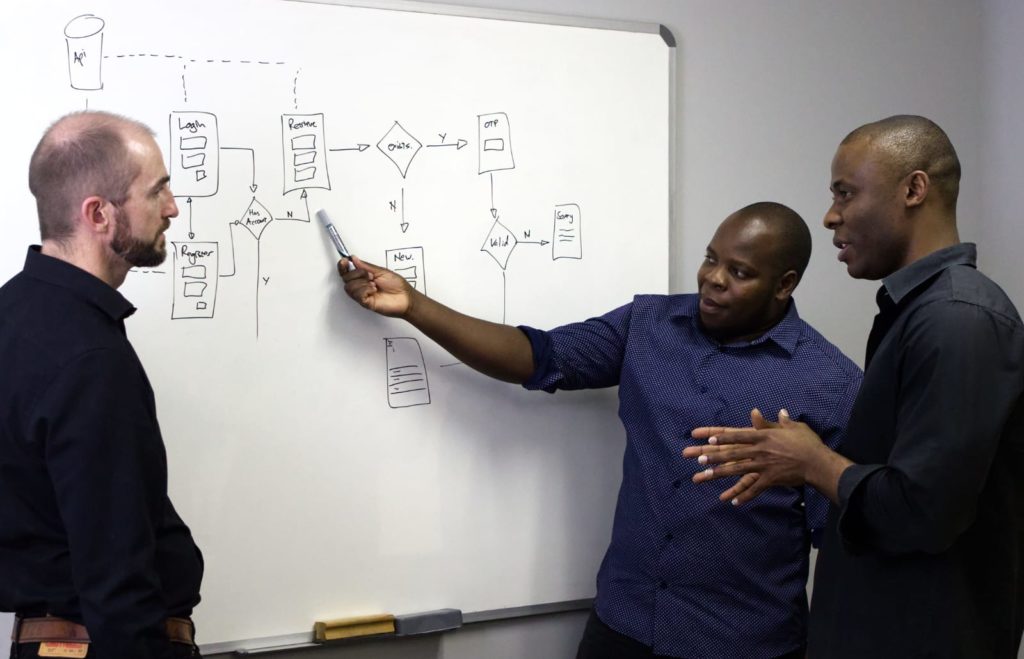
Why Not Simply Use Other Out-Of-The-Box Software Products?
“Many out of the box software packages like Salesforce, for example, work well for maybe 80% of the requirements, but any particular business is going to have requirements in their own workflow that are unique. Every time this unique variable is introduced it adds more and more time and complexity to a process that should be very simple.
These unique variables in your business are what makes your business different and, well, unique! Using one-size-fits-all software tools ultimately discourages innovative solutions that differentiate you from every other business out there.
Our goal is to provide truly customizable software to any business because no two businesses are the same. That, in essence, is why we have created Co-Foundry tech.”
What Makes Co-Foundry Tech Different From Other Software Development Approaches?
“Our continual improvement to how fast we take to get you a fully usable end product. It shouldn’t take 6 months to get you a completed product that you can only then take and try out.
I’ll give you a really good example.
We have a client in the US we’re busy creating a product for right now. They have a pretty good idea of what their workflow should be and they’ve gotten into all these ideas on what the product should be.
The only way to truly know if these ideas are correct and workable is to quickly get out a workable application, test it in real-world situations, and then you quickly start learning what’s really working and what isn’t.
Too many people obsess about “I’ve got to have the perfect product now,’‘ rather than saying “I need to have something workable now and that’ll help me get to perfection quickly.”
In that way, the client quickly benefits from all the learnings that happen as the product is field-tested, and a far more valuable final product is achieved.
Going back to our client in the US, we haven’t even fully released Version 1, but already the client is starting to see… hold on, I need to change a little bit of this here, or this there.
Now, remember in this example the client had a pretty strong idea of what they wanted in the first place. You can only imagine how this would go with a client who wasn’t sure of what they wanted to build.
Even now that we’ve released the product, I know we’re going to need to tweak parts of the software as the client discovers functions that can be improved or optimized.”
Why Did You Create Co-Foundry Tech?
“Obviously, we’ve covered this partly already:
- Concentrate more on User Experience than background technology
- Take the time out of development
I’ll add that we’ve done it to build software that makes Co-Foundry truly scalable because it makes our developers able to master it that much more quickly.
Also, we’ve come to see more and more over various development projects this is what’s common or this approach really works. And from there we can really know which of the various reusable parts of every application we build can be easily incorporated into our next project.
Ultimately I think that’s really why Co-Foundry tech was built. To take all the learnings we’ve accumulated over the years and be able to repackage them into modules that allow us to continually build better and better products as we go forward.
At the end of the day, this helps us deliver an already business-tested set of software modules that can quickly be custom-purposed to many business’s needs, and we know it can work for that specific need.”
What Benefits Will Co-Foundry Tech Have To Co-Foundry Partners, Who Use Co-Foundry As Their Outsourced Software Development Supplier?
- Speed! With the same value being provided.
- Quality and reliability of the product.
“Many developers typically will use the same open-source framework to build their applications on. These are often not the best for the particular application.
What we’re doing is basically pre-building a whole lot of modules that can be quickly repurposed interchangeably to fit an exact set of needs.
Think of it like a whole lot of different bricks that can be put on top of each other and connect together and quickly build a structure but still have 100% the ability to fully customize it to the client’s requirements.”
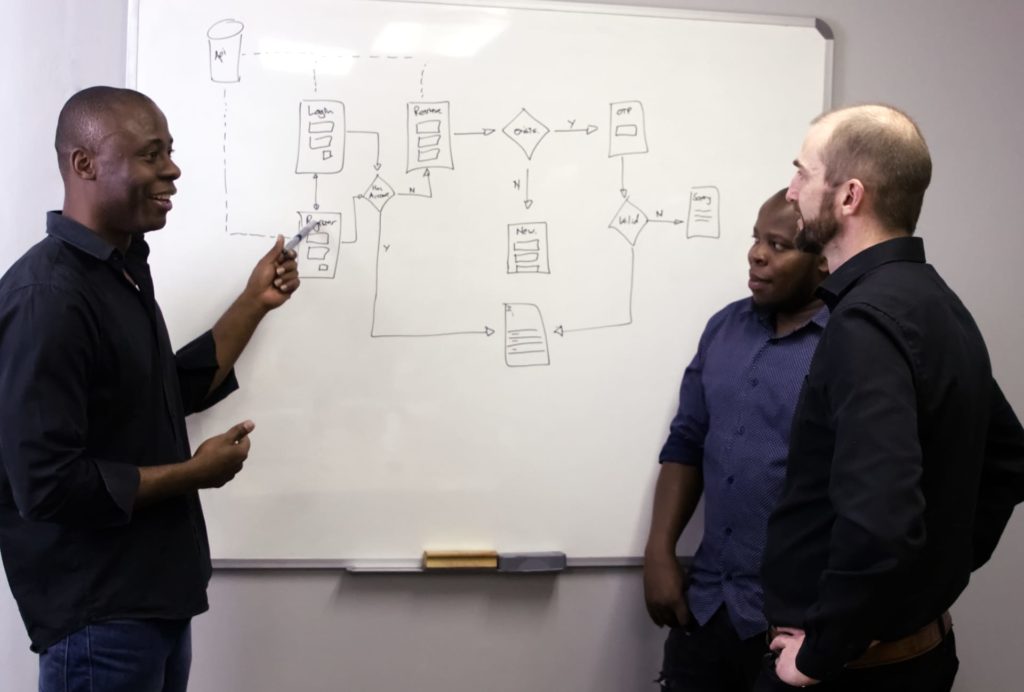
Explain The Tech Stack Involved With Co-foundry Tech And Why These Specific Choices Have Been Made.
“Let’s first start by defining the term tech stack. A technology stack is the specific foundation and levels of types of technology that a software uses as its building blocks.
For example, your PC runs on Windows as it’s first level of technology, called an OS, or operating system. A Mac would run on its own OS. Other applications like Word would then be the next level of that particular tech stack that runs on top of the operating system. Hence the term, tech stack.
The tech stack we’ve gone for with Co-Foundry is a common open-source environment. This means it’s not locked into any kind of proprietary licensing. It’s a type of code language called PHP which is ideal for the web-based applications we build.
It reduces our costs of onboarding new staff and new clients. Often new clients don’t need fancy technologies. They need something dependable that’ll do the job fast and well.
This chosen framework helps us deliver a workable software product in a faster time and without many of the complexities that many other approaches would have.
The other side of that is utilizing new virtual machine technology. Which is a fancy way of saying, we can clone the mind of one computer into another, or even split it in two within the same machine.
This helps us boot up different copies of the application we’re developing on multiple machines. So even if a machine is stolen or a new developer comes on board, we can instantly move off from where we left off.
So we’ve solved some of the common problems in software development that never need to get solved again.
We can then focus our energy on what the client’s requirements are, instead of the technical requirements to make that software, and development of it, work.”
Give Us Some Examples Of What Co-Foundry Tech Has Done For Some Of Your Clients?
“So one of our bigger clients, through one of our partners, effectively what our tech has allowed them to do is:
- Replace the need for an off-the-shelf software called Salesforce
- Replace an external, customized software platform that they used to manage some of their retail stores
- And future-wise, removing their ancient and very much out-dated software that’s running the crucial functions of their whole company!
And now the reason that’s been valuable to them is that it’s put them in a position that they can truly customize the software development needs of their business.
Ultimately their business is, in some way a tech company.
Most businesses these days are, because they rely heavily on tech to manage their customers, or manage their workflow or whatever the case is. So in some aspects, like many businesses, they are a tech company.
So basically they were trying to make three software packages work together.
This meant they needed 3 different types of developer skill sets to manage 3 very different types of software packages. It also meant that they had to continually keep up with monthly licensing and per month user licenses.
With Co-Foundry Tech you have the ability to retain the value of what you spend on the Software as it is never lost. In the case of paying Salesforce or other software licences you lose that value if you stop paying for it monthly.
So before they partnered with us to completely overhaul their business technology they had a lot of monthly costs. And the most frustrating part is that they didn’t own any of the code with their previous sets of software. After all these years they’d spent all this money but actually owned none of it.
I’m not 100% sure but in the end we saved this client a hefty software bill of, I believe, in the region of $30K to $50K a month!”
That’s An Interesting Point You Raised Now. So With This Co-Foundry Tech Approach, People Buy Their Own Software And Have No Future Payments After That?
“Yes, so my ultimate goal with this technology is to create an environment where we can all benefit from each other’s gains. We can benefit from what we’ve developed in the past.
And, as long as you stay within that environment, you can start to gain those benefits.
Basically, it’s Software Development As A Service, rather than Software As A Service. Maybe we can simply call it Development As A Service.
DAAS? Not sure if that acronym is taken but if not, there we go!
Ultimately with software as a service, all of your intellectual property gets plowed into a resource that you don’t own. People don’t necessarily realize it, but it’s a risk.
Also what many business owners don’t realize is, with what we’re building, it doesn’t cost you an arm and a leg to have customized software. As we go forward we’ll be creating an economy that’ll make it more and more affordable.
It hugely adds to the value of a business when its core technology functions are custom built for and fully owned by that business, rather than embedded in a 3rd party supplier and simply rented. It means the value of the business itself doesn’t ultimately rest on their technology supplier’s success or failure.”

Where do you see Co-Foundry Tech headed in the future?
“I refer to Google as a very good example of this. One of the things they’ve truly mastered is how to create economies, or let’s say digital economies. They’ve created an environment in which you can deploy your code into that environment and you’re part of that economy and you benefit from their experience.
To give a real-world example, it’s kind of like subscribing to your government and tax system or whatever it is, and you’re always subscribing to their plans of what roads and municipal facilities are being developed. Then you know what’s going to happen and you’re always contributing to the betterment of your environment.
So that’s really the goal here is to create an economy where, from a concept of customized software, you’re always gaining from the benefits of other’s experience in customized software.
So your costs are reduced. The security is well improved because multiple people are working on it and with it. The quality of the code is unbeatable. Once you’re in an economy that’s running several hundred pieces of software, you’re pretty guaranteed that that software is phenomenal.
Some companies have really perfected that, like SAP, in which many businesses then became completely dependent on SAP, to such a degree that if you took it out of the business, that business would disappear. Which is a bit concerning because it means you’re at the complete mercy of SAP.
That’s why we go the route of you still owning that codebase (the complete body of code that the software is made of). It’s still yours but you’re within the community. I think that’s a concept that’s been brewing a lot over many, many years within the open-source world.
In 5 – 10 years’ time I don’t see Co-Foundry being a software developer. I see them being an economy provider. I see them being like what Google is providing, in which we’re rather thinking:
- How do we improve the economy?
- How do we improve the environment for other developers to shine and to grow and to come up with solutions?
That’s really and truly where Co-Foundry will end up in 10 years’ time.”
So Co-Foundry Will Be A Supplier Of Developers And Developer Resources, Enabling Developers To Quickly And Efficiently Create Software Products For Various Businesses?
“Correct! And also for what those businesses try to target in the market place and I briefly touched on this earlier.
It’s great to have a tool like Salesforce as a product, but let’s say for example that part of your product is: now you need to deal with customers, now you need to engage with customers. You don’t necessarily want to engage with them through Salesforce.
How that customer engages with you, has infinite variations. It’s not a cookie-cutter.
How you decide to do it, the visual layout, etc. is all based around your product and your service, and it’s impossible to get that out of a one-size-fits-all product like Salesforce.
So that’s really where this will shine in that it’ll allow you the ability to customize around the actual, real requirements which are usability and engagement.
How do I engage with my users or my customers, or whatever it is, with truly customized software but at a cost that’s not going to cost me, you know, a team of 5 or 10 developers working for 5 years trying to perfect that technology?
And this is proven out in the case of that one big US client.
That’s where their limit was. They couldn’t now start to improve their service offering to their actual customers. Because part of that service offering was only experienced through Salesforce. So, it was impossible. So they had to evolve and get into a product that would join these worlds together.
It’s great to choose products like SAP and all these really, really good pieces of software. They’re excellent. They really do a good job, but they have boundaries, and in today’s market the most important thing that technology is enabling us to do is to communicate better with our customers.
If we’re not building software around that requirement and around users, it’s ultimately not going to work as effectively.
It will work to some extent, but it will hit roadblocks. It will definitely hit roadblocks.”
What Else Would You Like To Tell Us About Co-foundry Tech?
“From a personal viewpoint, I really value the tech because it’s going to make it easier for developers to build customized solutions without having to worry about development, if that makes sense.
Like take for example products like WordPress etc. great tool, great for its purpose but we’ve seen that to truly utilize it, you have to be a developer. The reason for that is fundamentally its technology is still ten to fifteen years old!
We’re at a point now where technology is getting so exciting that it truly is making it possible for the reality that one day, and definitely with Co-Foundry tech, you can sit there with a designer and he will design your user interface with you. Right in your office, and say this is how this is going to work and this is how this is going to move across the page and this is the form, etc.
Then quite literally say PRODUCE, and it will spit out the code for a finished usable application.
When we get to that stage, we can actually get to the real value of things. So that is going to happen down the line. Really truly meaningful stuff that’s going to make the software really meaningful to everyone involved, not just fancy for the developer or technically challenging for the developer or whatever.
I think technology and especially development is headed that way, in which the role between a Software Engineer and a Web Developer will further evolve.
This has happened to Website development. Years ago you needed a skilled web software developer to create a website management system (like WordPress). But today, you don’t need that high level of skill as the technology has been built by the software developer and now other less skilled (or more specialised) can “build” the site using that technology.
In some ways, if you really stretch this out 20-30 years, the technology will be so advanced that any basic user could build their own software. It’s kind of sad concept, but at the end of the day, it’s also about how fast things can get done.
So the point is that we have to have technology to help support that growth.
Technology will evolve to such a degree that you can sit there with someone who knows how to use the product can simply piece together what’s required and say Good, there you go!
We’ve got this already in aspects around the industry currently but it’s still far, far from perfect.”
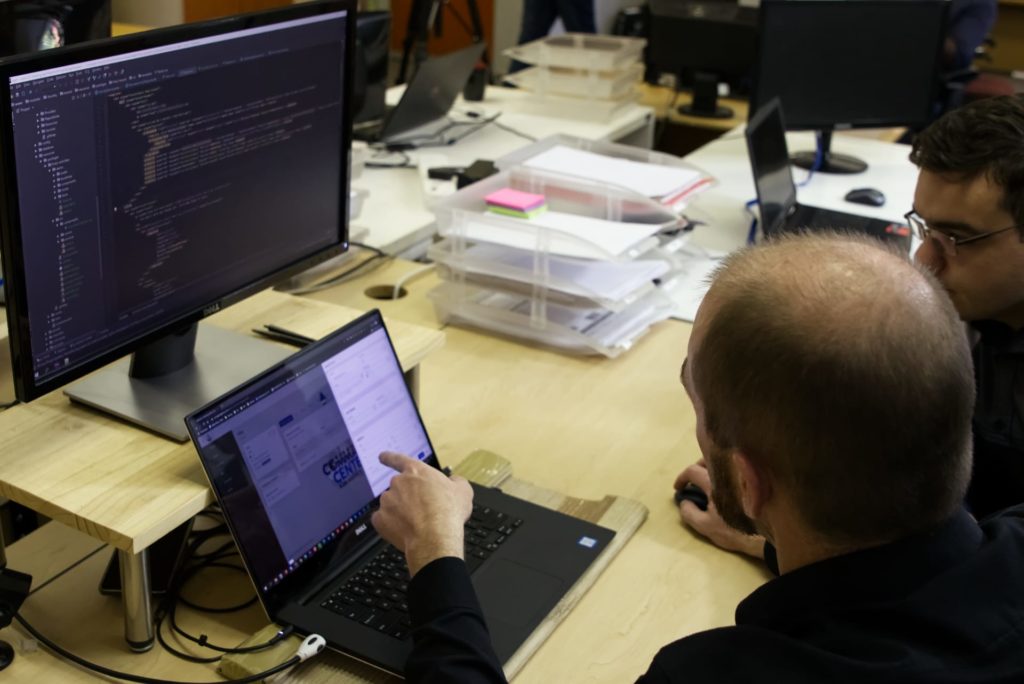
So development is going to get way cheaper and way faster is what you’re saying?
“Exactly!
So we’re working today towards what I’ve called Development As A Service. It’s a bright exciting, new future, in which technology products will become highly accessible and extremely fast to produce.
And Co-Foundry tech will be right there leading the charge.”
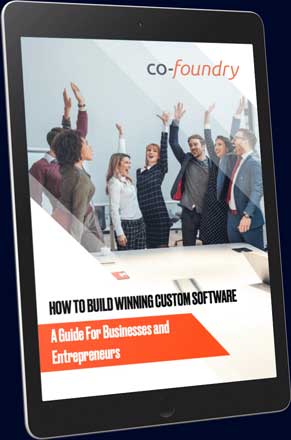
Want Help With Your Software Project?
Get Our Free Ebook: How to Build Winning Custom Software – A Guide For Businesses and Entrepreneurs
By subscribing, you agree to get emails from Co-Foundry. We’ll respect your privacy and you can unsubscribe at any time.



